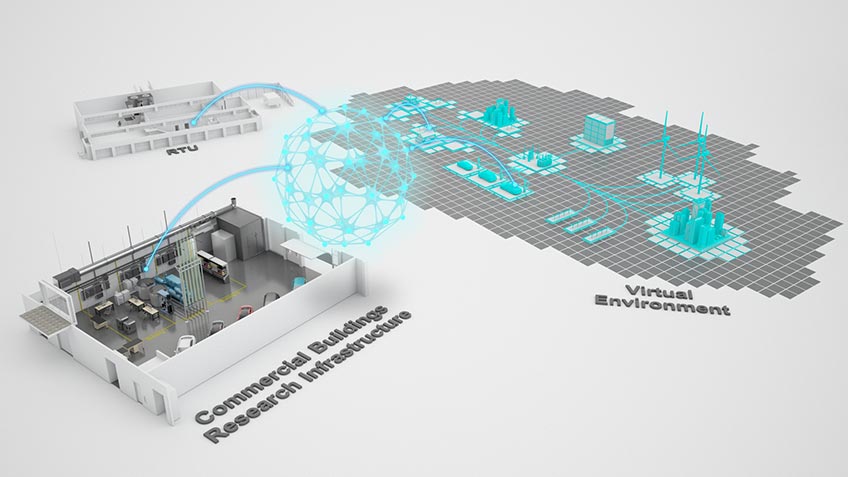Commercial Buildings Research Infrastructure
NLR's Commercial Buildings Research Infrastructure (CBRI), located in the Energy Systems Integration Facility (ESIF), is critical in determining how commercial grid-interactive efficient buildings can provide load flexibility for the future grid.

The CBRI fast-tracks scalable solutions with energy use, generation, and storage among buildings and the larger electric grid. Described as a flight simulator for commercial buildings, the CBRI integrates hardware and the virtual environment to evaluate technologies in a more flexible and reconfigurable manner. For example, this infrastructure can be used to characterize the performance of behind-the-meter thermal and battery energy storage and integrate it with a building simulation to see how the energy storage will impact the building performance. The CBRI will also include research infrastructure for evaluating building automation systems and will give industry the opportunity to develop and evaluate new control systems before they are installed in actual buildings.
Ultimately, the space will explore how to better connect utilities and buildings by providing a more integrated energy pathway from generation to the end user.
The research projects to be conducted in the CBRI, such as the Commonwealth Edison and CLEAResult partnership project, are expected to have cross-cutting, industry-wide impacts. NLR's collaboration with external partners in this space is an illustration of how this new capability will help generate real-world solutions to current market needs.
Who Does CBRI Matter To?
- Building owners
- Utilities and Utility Contractors
- Manufacturers
- U.S. Department of Energy and other federal offices
Types of Research
- Assess building-level impacts and aggregated impacts of grid interactions
- Run hardware-in-the-loop experiments for three commercial buildings
- Connect with the Thermal Test Facility to evaluate HVAC&R equipment such as rooftop units
- Connect with other ESIF labs and resources
- Utilize building automation system research infrastructure
- Integrate with behind-the-meter electrochemical and thermal storage systems
Contact
Share
Last Updated Dec. 6, 2025
